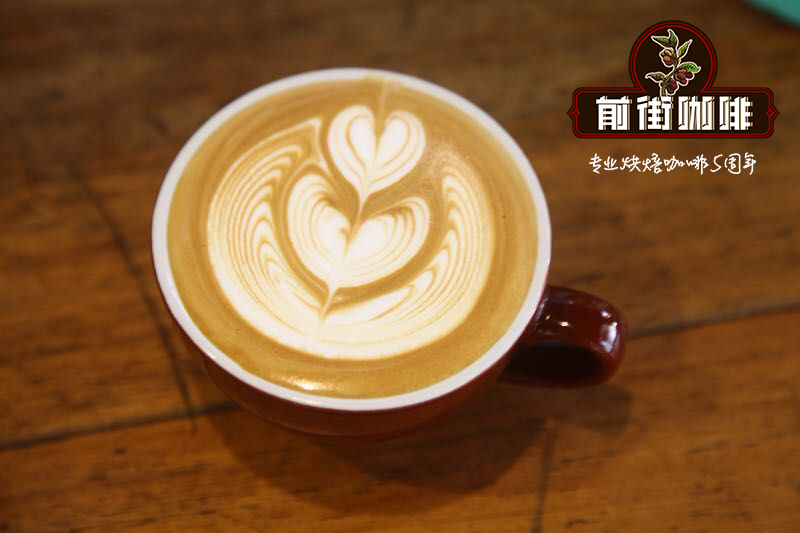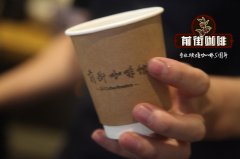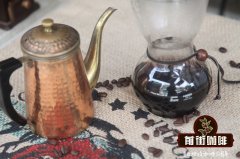What kind of pot should I use to make coffee? What kind of pot do you use to make coffee at home? What kind of coffee pot works well?

Professional coffee knowledge exchange more coffee bean information please follow the coffee workshop (Wechat official account cafe_style)
If you like coffee, you may have heard of a French filter pot, which may have many different names and patents from different regions.
What kind of coffee can be made by pressing the kettle?
The French kettle is a fully immersed cooking apparatus with a metal strainer. This makes the brewed coffee have a characteristic, because the water and coffee powder are directly soaked, so the final coffee oil will be richer, so it has a thicker and fuller taste. For those who don't like the taste of coffee grounds or fine powder, the French kettle may not be right for you.
The brewing kettle can control several factors (such as water temperature, grinding thickness and brewing time) and improve the brewing method according to personal preference. Most importantly, if you brew correctly, you can expect to enjoy the aroma and flavor of each kind of coffee you brew.
How to use a French kettle to make coffee?
There are some important factors to consider before making coffee
1. Grinding thickness
No matter what thickness scale is used, use a high-quality flat knife or cone knife grinder instead of a blade grinder, and this cooking method is likely to lead to excessive extraction. Then what kind of grinding is correct?
A thicker grinding scale is recommended here, which is a bit like small gravel rather than fine sand. If the grinding is too fine, it may make the water extract the coffee powder too fast. It may not be a problem for other soaking utensils, but if the kettle is ground too fine, coffee powder may penetrate the metal filter, resulting in a large amount of coffee grounds precipitating in the brewed coffee.
two。 Ratio of coffee powder to water
The powder-to-water ratio is a simple formula, that is, how much water to how much coffee powder, the common ratio is 1:15 (for example, 15g of coffee powder versus 225g of water). You can start from this ratio, according to your preference, and then increase or decrease the amount of coffee or water from the next brewing, and find out your favorite proportion.
3. Water temperature
Water temperature is another factor in the taste of experimental coffee. If there is no thermometer, the hot water can be boiled and left standing for 45 seconds (adjusted according to the temperature), brewing at a temperature of about 90 degrees. If you want to control the flavor of the brewed coffee, it is recommended to buy a temperature-controlled hand brewer.
4. Brewing time
The brewing time is about 3 to 5 minutes. If you brew deep-roasted coffee, 5 minutes may be too long; if it is shallow roasting, 3 minutes may be too short, so it is recommended to start with 4 minutes.
5. Brewing process
Pour the ground coffee powder into the preheated kettle, then slowly inject the hot water and make sure all the coffee powder is soaked. At first, use about twice the amount of water to pre-soak steamed coffee powder (for example, 15 grams of coffee powder is steamed with 30 grams of water).
Stir gently for 30 seconds, pour in the remaining hot water, and put the pressure canister on it, do not press it down at this time, wait for the coffee powder to soak for 4 minutes, press the canister slowly to the bottom, and pour out the coffee liquid carefully to avoid stirring the coffee grounds at the bottom of the pot.
If the pressure cylinder is a little difficult to press down, it means that the coffee powder is too fine; if the coffee powder sinks and the pressure resistance is too small, it means that the grinding is too coarse.
The secret of making a French kettle--
-pour out the coffee immediately after brewing. If it is not poured out immediately, the coffee powder will continue to come into contact with the water, resulting in the release of the bitter taste of the coffee. If you do not want to finish it directly, it is recommended to pour it into another container.
-make sure the French kettle is thoroughly cleaned and that even fresh coffee will be spoiled by coffee grounds that are not cleaned on the filter. Most filters should be easy to clean.
-if brewing coffee has been unable to satisfy your taste buds, it is recommended to try all the factors. Brewing coffee should be fun and experimental. Once you pour out your favorite coffee, it will certainly give you more motivation to delve into coffee brewing skills!
French coffee sprang up in the 1950s and was very popular in major cafes in Paris. This is a kind of coffee made from a glass coffee pot and a piston filter. Coffee making is a delicate and rigorous science, so in the process of making coffee, subtle changes in any element will affect the final taste of coffee. Making coffee is a ritual, and you have to be cautious in every step and keep trying to find the best taste of the coffee. A cup of coffee every morning always evokes your senses. You can judge the quality of the coffee by its aroma and color, as well as the work attitude of the barista standing behind the bar.
Preparatory work
If you are using filter paper, you need to wet the filter with hot water before making coffee. This can remove the odor of the filter paper itself and ensure the integrity and adequacy of coffee extraction. Now you can officially start making coffee.
Water temperature
Boil the water so that the temperature reaches 212 ℉. Stop heating and lower the water temperature to 200-208 ℉. Too high water temperature will lead to excessive extraction of coffee, coffee will become too bitter, dry taste. You can use a general electronic thermometer to measure the water temperature, but you'd better use a special Bonavita Variable Temperature Digital Electric Gooseneck Kettle coffee thermometer to ensure that the water temperature is accurate. Why do you use ℉ instead of ℃ here? because ℉ 's thermometer is more accurate and sensitive and can quickly respond to temperature changes, while ℃ is slow.
water
Although I believe that the exact gouache ratio is very important, when making French-pressed coffee, you usually use 1 serving of coffee to drink 6 servings of water. The water-soluble substances in coffee account for only 1.2% of the total coffee, so the quality of water is also very important.
Coffee powder
Finely ground coffee powder can increase the contact area between coffee and water, and the speed of coffee extraction is relatively fast, so to ensure the full integrity of coffee, you must make sure that the coffee is ground evenly (imagine that if you cut a steak into pieces of different sizes, the roasted steak must be different). To ensure a uniform coffee grinding, you must choose a conical grinder instead of a traditional blade grinder. The traditional blade grinder will not only make the coffee powder uneven, the heat generated during grinding will also make the coffee lose part of the essence, thus affecting the final taste of the coffee. The conical grinder can avoid the above problems. You can choose the Hario Skerton coffee grinder; of course, if you are a professional coffee lunatic, you can try using the Baratza Virtuoso coffee grinder, which has up to 40 grinding parameters to meet your needs.
Pour water
The transparent body of the French kettle allows you to clearly observe the whole process of coffee extraction. The first time you pour water, the amount of water should be only 1 inch less than that of coffee powder. This process releases gases and aromatic substances in coffee. Then pour in all the remaining water and stir 1-2 times with a long-handled spoon to fully blend the coffee powder and water. Add the filter and cover.
time
After closing the lid, let the coffee soak for more than 1 minute. If you soak for too long, the coffee will be overextracted, just like the steak is overburnt. That's why you need to get all the coffee out after you filter the coffee. The coffee left in the pot will continue its extraction process. Immediately after the production is finished, pour the coffee into another container.
In addition, it should be noted that:
If you want to add milk to your coffee, prepare a clean autoclave, pour in the milk at 1 stop 3 warm, slowly insert the filter, and push and pull repeatedly (just like inflating a bicycle tire) until the milk is twice its original volume. At this time, the milk tastes silky and gets rid of fully. Pour milk into the coffee and make the classic cafe é au lait.
END
Important Notice :
前街咖啡 FrontStreet Coffee has moved to new addredd:
FrontStreet Coffee Address: 315,Donghua East Road,GuangZhou
Tel:020 38364473
- Prev

What are the recommended brands of French press pots?
Professional coffee knowledge exchange More coffee bean information Please pay attention to coffee workshop (Weixin Official Accounts cafe_style) French press pot, namely French press, is the abbreviation of French filter pot. It is the simplest of all coffee brewing systems. It is most suitable for people who have just started to make their own coffee, because it does not require too many operation steps and technical content, even if it is coffee white.
- Next

Usage of American drip filter Coffee Machine what if the taste of American drip filter coffee machine is too weak
Professional coffee knowledge exchange more coffee bean information Please follow the coffee workshop (Wechat official account cafe_style) American coffee as we all know, does the household electric coffee drip filter make American coffee? It should be, but the taste is different. The main advantage of using such a machine at home is its convenience and simplicity. First aid today, everyone.
Related
- Beginners will see the "Coffee pull flower" guide!
- What is the difference between ice blog purified milk and ordinary milk coffee?
- Why is the Philippines the largest producer of crops in Liberia?
- For coffee extraction, should the fine powder be retained?
- How does extracted espresso fill pressed powder? How much strength does it take to press the powder?
- How to make jasmine cold extract coffee? Is the jasmine + latte good?
- Will this little toy really make the coffee taste better? How does Lily Drip affect coffee extraction?
- Will the action of slapping the filter cup also affect coffee extraction?
- What's the difference between powder-to-water ratio and powder-to-liquid ratio?
- What is the Ethiopian local species? What does it have to do with Heirloom native species?

